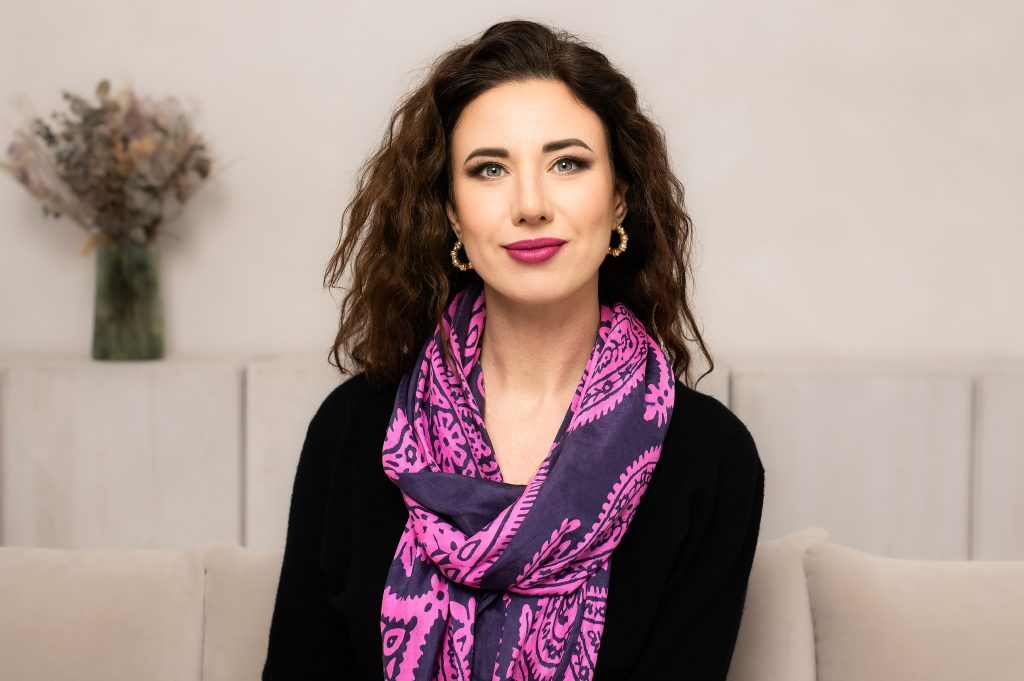Photo by Egle Senderoviene
Ornela Ramasauskaite
In the realm of cultural metamorphosis, few landscapes offer as fertile a ground for transformation as the liberated territories of Karabakh. As an art market expert with a background in the European cultural sector, my pursuit of marrying artistry with economic vitality has led me to the historic and resilient heart of Azerbaijan again. Here, amidst the echoes of liberation, lies an extraordinary canvas for creation and investment that the Azerbaijan government is passionately committed to developing.
My recent months in Azerbaijan were not merely a visit; I was taken on an even more profound significance with an escorted visit to the rejuvenating landscapes of Zangilan in December (2023), remembering the visit to Shusha last year. To walk on soil freshly liberated is to walk alongside history in the making, and to meet with the President of Azerbaijan in the Forum organized by the ADA University and the AIR centre allowed me to glimpse the resolve and resources poised to propel Karabakh into a new era. We stand at a pivotal moment where strategic investment meets cultural heritage, creating a synergy that promises not just to rebuild but to innovate and inspire.
The Current State of Karabakh’s Cultural Economy’s Potential
In the heart of the once-silent streets of Shusha and the untouched expanses of Zangilan, the pulse of Karabakh’s cultural economy is beginning to quicken. The atmosphere is charged with anticipation as plans to erect five museums and parks in the Zangilan district lay the foundation for a new era of cultural prosperity. These envisioned spaces are more than mere repositories of art or stretches of green; they are future epicentres of community, education, and engagement, designed to weave the region’s historical narrative into the everyday lives of its people.
Shusha, historically lauded as the cultural pearl of Azerbaijan radiates with renewed vigour. Here, amidst its cobblestone paths, 196 historical and cultural monuments are slated for revival. Each stone and structure tells a story, each restoration a commitment to honour a past that has shaped the very essence of the nation. Proclaimed as the cultural capital of the Turkic world, Shusha’s recognition extends beyond national pride – it affirms its role as a custodian of a vast and vibrant cultural heritage.
The Azerbaijani government’s focus on cultural heritage and creative industries is a strategic investment in the socio-economic fabric of the region. By nurturing these sectors, the aim is to create a magnet for tourism and a beacon for creative minds. There is an understanding that cultural wealth can catalyze economic growth and transform Karabakh into a destination for visitors, young families, and experts who seek to contribute to the renaissance of these liberated lands.
Global Benchmarks: Lessons from Other Regions
The blueprint for Karabakh’scultural and creative renaissance can be enriched by gleaning lessons from global benchmarks. Around the world, there are exemplary case studies where cultural and creative industries have catalyzed economic revitalization and fostered community identity.
One of the best ones is the city of Bilbao in Spain, which once faced industrial decline. The inauguration of the Guggenheim Museum, a project that combined audacious architecture with a curated cultural offering, transformed the city’s skyline and socio-economic prospects. This “Bilbao Effect” sparked a cultural tourism boom and ignited the regeneration of urban spaces, illustrating the potential of iconic cultural investments to drive broad-based economic growth.
In the years following the Guggenheim MMuseum’sinauguration in 1997, Bilbao witnessed a dramatic turnaround in its economic fortunes. A city once grappling with the decline of its industrial sector, Bilbao saw its unemployment rate, which peaked at around 25% in the early 1990s, begin to drop steadily. Reports indicate that within the first three years, the Guggenheim Museum Bilbao attracted over 4 million visitors, far exceeding initial expectations. The “Bilbao Effect” was quantifiable: a study by the University of Deusto in Bilbao cited that the museum contributed €168 million to the country’s GDP in its first year alone and generated around €27 million in taxes, more than covering the initial investment made by regional authorities. By 2015, the economic impact was estimated to have multiplied, with the museum bringing over €300 million annually to the local economy and supporting over 5,000 jobs directly and indirectly. This economic renaissance, spurred by a single cultural institution, underscored the transformative power of investing in cultural capital. The Bilbao case exemplified how cultural infrastructure can serve as an economic engine. It demonstrated the broader impacts on urban renewal, community rejuvenation, and the elevation of a city to a global tourist and cultural destination.
Karabakh is poised to align its rich cultural heritage with the vibrancy of contemporary demands, aspiring to become a creative nexus where history, culture, and innovation converge to craft a dynamic future. This progressive vision should aim to elevate Karabakh into the global cultural consciousness, casting it not just as the guardian of age-old traditions but also as a trailblazer of modern creative expression. Central to this vision could be the creation of an international contemporary art residency, anticipated to be the linchpin for the region’s cultural revival.
Integral to this ambition is the harmonization of Karabakh’s distinct cultural identity with an eclectic mix of creative domains. Music, especially Shusha’s revered mugham tradition, is set to be a foundational element of this cultural synthesis. This revered musical form, known for its complex melodies and profound emotional depth, provides a portal for safeguarding a cherished tradition and venturing into avant-garde musical explorations. The development of top-tier recording facilities and venues promises to establish Karabakh as a hub for musicians and enthusiasts worldwide, nurturing a living heritage with global appeal.
Moreover, film, digital media, and design are brimming with potential. Capitalizing on the region’s picturesque scenery and storied past, Karabakh has the opportunity to become a coveted destination for filmmakers. With the support of investments in tech incubators and educational programs, the digital arts and design are poised to thrive, fostering innovation and creativity.
The envisioned international art residency is a cornerstone strategy to attract a global community of artists to engage in collaborative, research-driven art projects with local talent. This initiative should be designed to connect intimately with the community and tackle universal themes, from cultural heritage to environmental stewardship, through locally grounded and globally relevant art. The cross-pollination of ideas between international and local creatives promises to cultivate a vibrant, enduring artistic ecosystem. The residency’s zenith, an annual grand exhibition, was set to cast Karabakh onto the global stage, echoing the prestigious impact of events like the Venice Biennale. More than just attracting connoisseurs and art enthusiasts, this exhibition is envisioned as a significant conduit for cultural diplomacy, showcasing Azerbaijani culture with contemporary flair and engaging a diverse, youthful international audience.
By weaving contemporary art into the fabric of its cultural policy, Karabakh would position itself at the forefront of global artistic trends, tapping into the vitality and fresh perspectives of both the local and international youth. This initiative would be expected to anchor a series of related cultural happenings reminiscent of the broad cultural influence seen in projects like the Riyadh Art Project, which will enhance Karabakh’s cultural landscape and invigorate its economic milieu.
The Role of Cultural Diplomacy and International Collaboration
Cultural diplomacy is a key driver in Karabakh’s ongoing transformation, offering a platform for the region to share its narrative and engage with global audiences. This form of diplomacy would invite the world to connect with Karabakh’s cultural story, fostering understanding and collaboration through the arts. It’s a strategic tool that showcases the region’s culture and bolsters its international standing by facilitating conversations that bridge political and societal divides.
Karabakh’s cultural renaissance presents ample opportunities for forging global partnerships. Establishing connections with cultural entities, academic institutions, and artistic organizations worldwide, Karabakh stands to gain access to an expansive pool of knowledge and a vast network. These alliances could take shape in collaborative art endeavours, artist exchange programs, and festivals that celebrate the rich tapestry of diversity. Such international partnerships have the potential to spur economic growth by attracting tourism and investment, thus enriching the region’s cultural landscape.
Each interaction is a chance to plant seeds of mutual respect and nurture global recognition of the region’s cultural offerings. Effective cultural diplomacy hinges on the ability to tell universal stories. Karabakh’s cultural strategy should focus on crafting narratives that address global issues like peace, resilience, and innovation while remaining grounded in the region’s distinct experiences. By aligning its cultural narrative with universal themes, Karabakh can solidify its presence in the international cultural sphere, establishing itself as a vibrant voice in cultural exchanges worldwide.
Economic Implications and Sustainability
Investing in Karabakh’s cultural and creative sectors represent a dual commitment to nurturing the arts and spurring economic growth. This strategy not only enriches the cultural landscape but also plays a pivotal role in economic development, emphasizing the importance of sustainability and the engagement of the private sector for enduring prosperity.
The economic advantages of this investment are extensive:
Job Creation: The burgeoning cultural and creative industries serve as a robust employment engine, offering a range of jobs from artistic to technical and administrative positions, fostering job diversity and regional stability.
Tourism Enhancement: Cultural investment is a tourism magnet, attracting visitors to KKarabakh’s distinctive artistic experiences and historical richness, thereby bolstering the local economy.
Global Positioning: A thriving cultural scene elevates KKarabakh’s international standing, making it an alluring prospect for foreign investors and a hotspot for international events, catalyzing further economic activity.
Innovation and Economic Diversification: Creative sectors often lead innovation, enabling Karabakh to diversify its economic base and pioneer new economic models, decreasing reliance on traditional industries.
Sustainable Development: Pursuing cultural growth is carefully balanced with resource conservation, ensuring that economic expansion is harmonious with cultural and environmental preservation.
Community Engagement: Local involvement in cultural initiatives ensures that development aligns with community needs and respects traditional values, fostering a sense of belonging and investment in the region’s cultural future.
Eco-conscious Practices: Adopting eco-friendly methods in cultural facilities and events prioritizes sustainability, reducing the sector’s sociological impact.
Fostering Investment and Sponsorship: Private investment and sponsorship in cultural endeavours are crucial, providing vital financial backing and nurturing a collaborative spirit for cultural progress.
Public-Private Synergy: Partnerships between government and private stakeholders can result in more effective and innovative cultural projects, harnessing the strengths of both spheres.
Cultural Entrepreneurship: Supporting entrepreneurial ventures in the arts encourages innovation and broadens economic diversification, contributing to a resilient and dynamic cultural economy.
The impact of these investments transcends immediate economic returns like job creation and tourism. It lays the foundation for a sustainable growth trajectory, leveraging private sector dynamism and expertise. As Karabakh continues to weave its cultural tapestry, the fusion of economic vigour with cultural richness is shaping a future where culture is not only a heritage to be cherished but also a vital component of a thriving, living economy.
Karabakh’s transformation into a cultural and creative hub could be a global example of a narrative of resilience and innovation, blending its rich heritage with modern creativity. This journey, underpinned by comprehensive stakeholder engagement and international support, would signify a bright future for the region. Azerbaijan’s selection to host COP29 next year adds a layer of global environmental responsibility and recognition, aligning with Karabakh’s sustainable cultural development. We might witness an international revival of the Silk Region with the Karabakh’s case.

